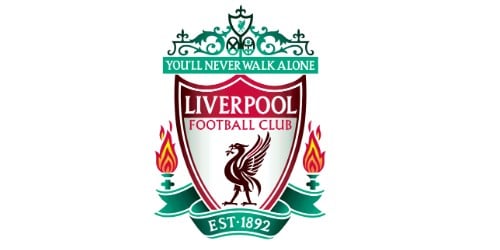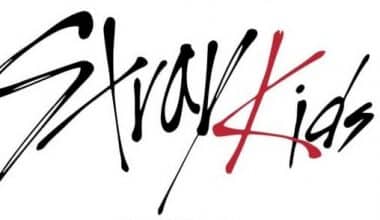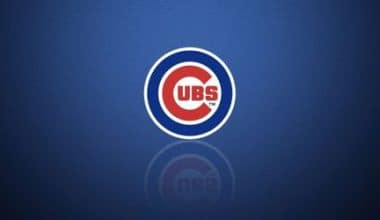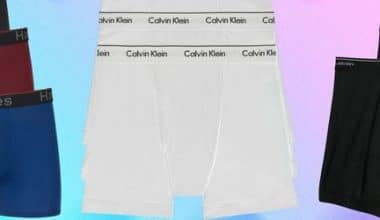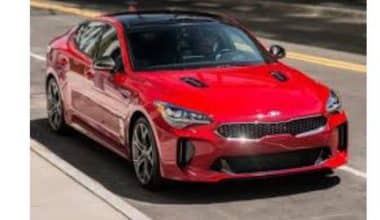For many years, the Liverbird was the club’s mascot. It was taken from army uniforms and first appeared in the club at the turn of the century, when its image was engraved on the championship medals given to the players in 1901. The bird was put on the club flag for the first time in 1922, when it was made to honor the team’s league wins. Its image has appeared on pre-match programs since 1935, and in the 1930s, it appeared on the training suits worn by players at Anfield Stadium. Meanwhile, let’s go over how the Liverpool logo came to be, the symbolic meaning behind it, and its evolution.
What Exactly is Liverpool?
Liverpool is the name of a gray British professional football club founded in 1892. Today, the team does well in the Premier League. Its home field is Anfield Stadium, and Jurgen Klipsch is the club’s general manager.
Liverpool Logo: History and Significance
According to the team’s official logo history, the first Liverpool logo was a replica of the coat of arms of its home city, Liverpool. In this area, you may view Neptune, the Roman deity of the sea, and Triton, the Greek sea messenger. There were two cormorants, or Liver birds, between them, a popular theme in the heraldic system of Liverpool and one of its most well-known symbols. Triton and Neptune were both holding flags. There was a flag in the Latin language that said, “God has granted us this ease.”
Read Also: NICKELODEON LOGO: Variations, Evolution, History &Meaning
1892 – 1950
The first Liverpool logo featured the official insignia of the city of Liverpool, the team’s motherland. It was a red and white design with two Greek gods—Neptune and Triton—on the sides of a vertically oriented banner with gorgeous and intricate pictures of two liver birds. The club’s nameplate, inscribed on an arching ribbon, was put beneath the image.
1940s – 1980
Another crest from the late 1940s included a cormorant inside a shield. The bird had seaweed in its beak. The crest was never designated as the official logo. It did, however, last several decades, with the last use being in the early 1980s.
1950 – 1955
The Liverpool visual identity was streamlined in 1950 with the introduction of the Ted crest in a white outline with a white picture of the liver bird on it. There are no ornaments, ribbons, or text here, simply the club’s main graphical insignia in their classic color palette.
1955 – 1968
The Liverpool logo was redone in 1955, and the crest shape was replaced by a clean, crisp, vertically oriented oval. The background was changed to white, and the red framing was balanced by the exquisite red image of the liver bird and the sans-serif text “L. F. C.” arched beneath it.
1968 – 1987
In 1968, the emblem’s oval frame was taken away and the bird’s shape was polished and made more modern. Some of the colors had been added, and the club had started to use a brighter shade of red, like scarlet red.
1987 – 1992
Liverpool returned to a darker crimson and a more intricate emblem composition in 1987. In the current edition, a dramatic dark red silhouette of the bird is set atop a white triangular crest with a thin red edge. The crest featured two dark Ted ribbons along its bottom sides, as well as white “Liverpool” text in the capital. The text “Football Club” was placed on a horizontal banner beneath the badge.
1992 – 1993
In 1992, the club was celebrating its 100th anniversary, so I made a new logo that was used for a year. The piece was bright and lively, with green and yellow decorations around the white triangular crest. The intricate green leaves were placed above a yellow horizontal banner with the clubs’ motto “You’ll never walk alone” on it, and the yellow ribbon with the “1892—1992” datemark in red was set under the crest. The main crest was a red horizontal banner with the words “100 years” and “Liverpool Football Club” written in red. Above the banner was an image of the famous liver bird.
Read Also: NISSAN LOGO: Why Did Nissan Change Its Logo (Invaluable 2022 Tips)
1993 – 1999
The elaborate logo from 1992 was refined and redone in narrower, clearer lines in 1993. The “100 years” component of the crest was eliminated, but all other aspects remained. Two stylized flame images in red, white, and black were placed on both sides of the crest. This badge was kept by the club for another six years.
1999 – Today
In 1999, the yellow elements on the Liverpool heraldic logo were replaced with green ones. Gradient colors were added to the picture to make the badge more interesting and show how the famous British club has grown and changed. The liver bird was redesigned with white accents and began to resemble a real bird.
2012 – Today
The Liverpool logo from 1968 was reintroduced in 2012, but in a modified form – the red liver bird’s features were strengthened and cleaned, and the “L. F. C.” inscription beneath it was now put in a straight line and executed in an exquisite and excellent serif typeface.
2017 – 2018
Two new FC Liverpool logos were launched in April 2017. They were developed to commemorate the team’s anniversary during the 2017/2018 season. In actuality, things didn’t change all that much because each of the important pieces remained in place.
The entire shield resembles its predecessor, except for the dates “1892” and “2017,” which appear from either side. The first date represents the year the club played its first game, while 2017 marks the club’s 125th anniversary. Additionally, the text “125 years” appears beneath the shield.
The second form of the crest, which appears on the kits, is significantly simpler. There’s only the bird (which appears remarkably identical to the main logo, only it’s flat) and the text “L.F.C.” (Liverpool Football Club). The anniversary version of the crest, like the primary logo, has the dates “1892” and “2017,” as well as the lettering “125 years” beneath.
Read Also: DISNEYLAND LOGO: History and Evolution
Liverpool Logo: Font and Color
The glyphic serif typeface used in the Liverpool logo is similar to several fonts. Albertus Roman, Flareserif 821, and Narkisim are some typefaces that are similar.
Color
The current palette is built on four bright and vivid hues that are ideal for soccer, including Persian green (#00A398), red (#D00027), and a vibrant shade of yellow called Icterine (#FDF667). We should also mention that because the Liverpool logo is 3D, there are additional colors. The many colors of green, red, and yellow are essential for creating the 3D illusion.
History of the Liverpool Club
Following Everton’s move to Goodison Park in 1892, club president John Houlding found himself with the rights to Anfield stadium but no team to play on it. Houlding, ever the practical man, swiftly resolved to solve the problem by founding his own club, Liverpool (which should not be confused with Liverpool Ramblers AFC which was founded ten years earlier).
After joining the Football League in 1893, the squad was promoted to the top level after only one season in the second division. Liverpool became one of England’s best teams very quickly. It won the League title in 1901, 1906, 1922, and 1923.
Bill Shankly’s Reign
Liverpool FC, despite being a hugely popular team even back then, was not particularly consistent in the post-World War II era. After winning their fourth League title in 1947, the club fell into a slump that resulted in their relegation to the Second Division in 1954. However, things improved after Bill Shankly was hired as a manager; Shankly’s first order of business was to release the whole first-team players. He subsequently transformed the club’s storage area into the infamous “Boot Room,” which became the coaches’ secret gathering location for the following three decades.
Shankly’s unconventional approaches bore fruit quickly. Liverpool won the league two years after returning to the First Division in 1962. During Shankly’s stay as manager, they won two more League titles (1966, 1973), two FA Cups (1965, 1974), and their first European trophy, the 1973 UEFA Cup. Shankly quit his job in 1974 because he wanted to take a vacation. He left his assistant, Bob Paisley, in charge of the club.
Finances and Ownership
John Houlding, the owner of Anfield and the founder of Liverpool, was the club’s first chairman, a post he held from the club’s inception in 1892 until 1904. Following Houlding’s resignation, John McKenna was appointed chairman. McKenna later became the Football League’s President.
The chairmanship changed hands several times before John Smith, whose father was a club shareholder, took it in 1973. Before departing aside in 1990, he supervised Liverpool’s most successful period. His replacement, Noel White, took over as chairman in 1990. David Moores, whose family had controlled the club for more than 50 years, was appointed chairman in August 1991. His uncle, John Moores, was a shareholder at both Liverpool and Everton from 1961 to 1973. Moores owned 51% of the club and stated his openness to explore a proposal for his interests in Liverpool in 2004.
Moores eventually sold the club on February 6, 2007, to American businessmen George Gillett and Tom Hicks. The club and its outstanding debts were valued at £218.9 million in the purchase. The pair paid £5,000 per share, for a total shareholding of £174.1 million and £44.8 million to pay the club’s debts.
Read Also: CHARGERS LOGO: Facts That You Didn’t Know About The Chargers Team
Disagreements between Gillett and Hicks, as well as a lack of fan support, led to the two attempting to sell the club. On April 16, 2010, Martin Broughton was appointed chairman of the club to supervise its sale. In May 2010, the club’s holding company was shown to be £350 million in debt (due to a leveraged takeover) with losses of £55 million, prompting auditor KPMG to qualify their audit opinion.
The group’s creditors, including the Royal Bank of Scotland, sued Gillett and Hicks to force them to allow the board to sell the club, the holding company’s main asset. Mr. Justice Floyd of the High Court decided in favor of the creditors, clearing the way for the sale of the club to Fenway Sports Group (previously New England Sports Ventures), though Gillett and Hicks could still appeal. On October 15, 2010, Liverpool was sold to Fenway Sports Group for £300 million.
Liverpool has been regarded as a global brand; according to a 2010 report, the club’s trademarks and associated intellectual property were valued at £141 million, a £5 million rise over the previous year. Liverpool received an AA brand rating (Very Strong).
Forbes magazine listed Liverpool as the sixth most valuable football team in the world in April 2010, trailing Manchester United, Real Madrid, Arsenal, Barcelona, and Bayern Munich; the club was valued at $822 million (£532 million) excluding debt. Deloitte, the accounting firm, put Liverpool eighth in the Deloitte Football Money League, which ranks the world’s football clubs based on income. Liverpool’s revenue in the 2009-10 season was €225.3 million.
Read Also: NOTRE DAME LOGO: How The Fighting Irish Got Their Name
According to a Deloitte analysis from 2018, the club made €424.2 million in revenue the previous year, and Forbes valued the club at $1.944 billion. In 2018, annual income grew to €513.7 million, and the club was valued at $2.183 billion by Forbes. According to Deloitte, revenue grew to €604 million (£533 million) in 2019, with the club surpassing the half-billion-pound barrier.
Fans and the media chastised the club’s owners in April 2020 for electing to furlough all non-playing personnel during the COVID-19 pandemic.
In reaction, the club reversed its decision and apologized for its earlier choice. Forbes rated the club at $4.1 billion in April 2021, an 88% gain in two years, making them the world’s fifth-most-valuable football club.
Adding to the Trophy Collection
The personnel change had little effect on Liverpool’s supremacy. Liverpool was a surprisingly steady squad under Paisley, winning six League crowns and three League Cups in his nine years in command. Their dominance extended to Europe, with Liverpool winning one UEFA Cup and three European Cups between 1976 and 1981. After Paisley retired in 1983, his assistant Joe Fagan carried on the great tradition by leading the club to the Triple Crown in his first season in charge.
The Heysel and Hillsborough Disasters
Liverpool faced Juventus in the European Cup final in 1985. Unfortunately, that match is now widely recognized as the Heysel disaster, in which 39 spectators were crushed to death after some rowdy fans caused a perimeter wall to fall. Because the accident was exclusively the fault of Liverpool fans, all English clubs were barred from participating in European championships for the next five years.
In the absence of European games, Liverpool began to concentrate on domestic competitions. But tragedy struck again after winning two more League titles in 1986 and 1988, as well as an FA Cup in 1985. Only six minutes into the 1989 FA Cup semi-final between Liverpool and Nottingham Forest, 94 spectators were killed in a crowd crush. Hillsborough is the worst stadium disaster in English football history to this day.
Read Also: WWE LOGO: The History Timeline of The WWE Championships
Liverpool began a downward spiral after winning their seventh league title in 1990. Liverpool’s star seemed to fade throughout the 1990s and early 2000s, with only a couple of Cup victories and some dismal league finishes. Still, they proved their worth in the most exciting way possible: they beat Milan on penalties after being down 3-0 at halftime in the Champions League final in 2005.
As it turned out, the club’s swan song was this amazing victory. Over the next decade, Liverpool was primarily viewed as playing second fiddle to other English clubs, with only two Cup wins and a second-place league result to show for their efforts.
What Is the Name of the Bird on the Liverpool Crest?
The bird on the Liverpool crest is the Liver bird, a mythical creature that also serves as the city’s distinctive symbol.
For nearly 800 years, the Liver bird has been a symbol of Liverpool, and it features on the city’s arms.
The mythology and history of the Liver bird date back to 1229, when King Henry III granted the residents of Liverpool the right to self-government through trade guilds. To certify documents, a one-of-a-kind seal was commissioned, with the design featuring the Liver bird.
The construction of the Liver Building in the heart of Liverpool further popularized the Liver bird’s reputation as the city’s symbol, as a sculpture of a female pair of birds sits atop the landmark structure.
The two Liver birds are thought to be a male and female pair, with local legend claiming that the female bird watches out at sea, ensuring that the seamen return safely to the city, while the male guards the city, keeping an eye on the seamen’s families. Other myths hold that the birds face each other because if they mate and fly away, the city would be destroyed.
Is the Liver Bird Associated With Liverpool or Everton?
Although the Liverpool club crest prominently features the Liver bird, it was Everton who first used it as a symbol – but it was eventually replaced in the 1930s by the Everton Lock-Up.
Although the Liverpool bird was established as part of the official Liverpool badge in 1901, it was not used in the shirt until 1955.
Liverpool uses the Liver Bird design a lot in their club crest, merchandise, and souvenirs. In 2008, they tried to trademark the Liver Bird to stop people from making fake kits.
But the city council said the symbol belonged to the whole city, not just one club, so the application was taken back.
Liver Birds in Popular Culture
Aside from being the city’s official mascot, the Liver bird’s symbolism lives on in popular culture through notable Liverpudlians.
The Liverbirds were an all-female rock band in the 1960s, and Sir Paul McCartney, one of the Beatles’ four members, has a crest with a Liver bird holding a guitar.
Liver birds of various shapes, sizes, and forms can be found all over Liverpool and beyond.
Related Articles
- CADILLAC LOGO: The Cadillac History of Excellence.
- POULTRY FARMING BUSINESS: Baby-steps to Setup a Cost-effective Business
- NFL LOGO: Meaning, Evolution, and History
- PAY PER CLICK ADVERTISING (PPC): Costs And Top 7 Agencies
- NEW KIA LOGO: Why Kia Changed Their Logo & Best Branding Practices
